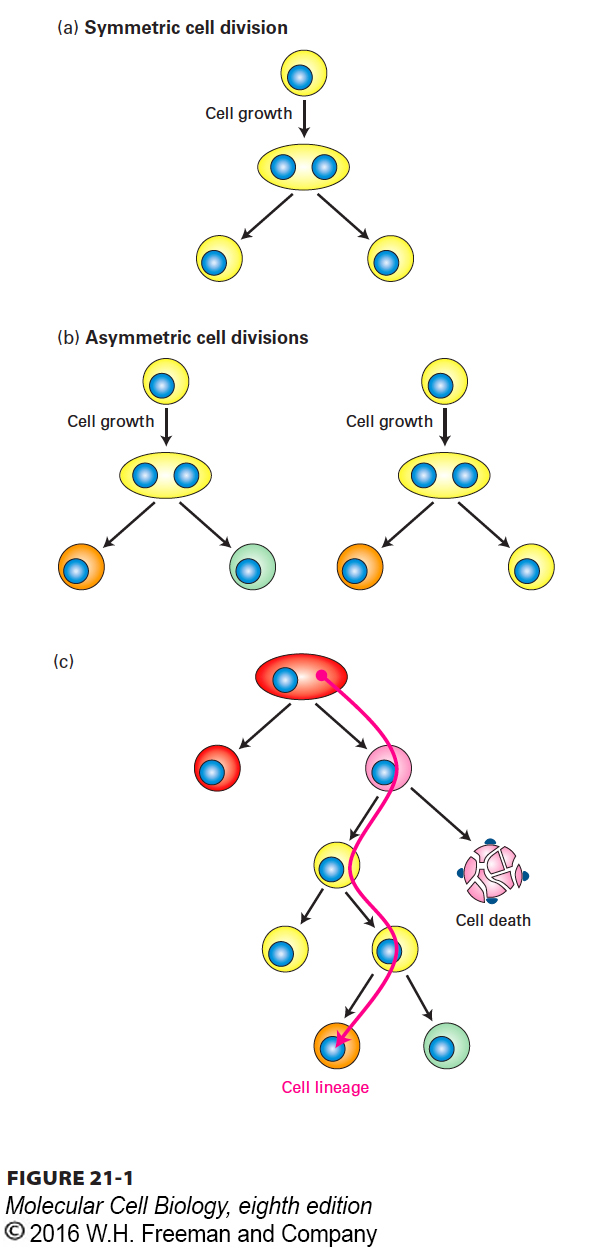
FIGURE 21- 1 Overview of the birth, lineage, and death of cells. Following growth, daughter cells are “born” as the result of symmetric or asymmetric cell division. (a) The two daughter cells resulting from symmetric division are essentially identical to each other and to the parent cell. Such daughter cells can subsequently have different fates if they are exposed to different signals. (b) The two daughter cells resulting from asymmetric cell division differ from birth and consequently have different fates. In some cases (left), both daughter cells are different from each other and from the parent cell. In others (right), one daughter cell is essentially identical to the parent and the other assumes a different fate. Asymmetric division is common when the parent cell is a stem cell; this allows the number of stem cells (yellow) to remain constant while they continue to generate other cells (orange) that mature into one or more differentiated cell types. (c) A series of symmetric and asymmetric cell divisions, called a cell lineage, gives birth to each of the specialized cell types found in a multicellular organism. The cell lineage can be under tight genetic control. Programmed cell death occurs during normal development (e.g., in the webbing that initially develops when fingers grow) and in response to infection or toxins.
[Leave] [Close]